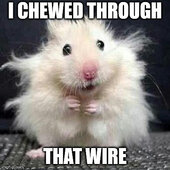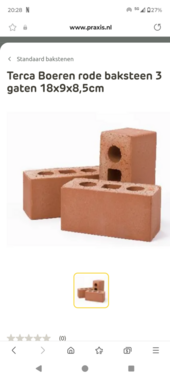Hi folks. I’m dealing with a strange problem and was hoping to get some feedback from more experienced solar system owners, especially those who use buried cable runs from their solar panels to their charge controllers/batteries. Keep in mind as you read this that this setup has worked fine for 2 years.
The setup:
Offgrid cabin location.
Qty 4 12v panels (420w total) arranged in series for 48v. Tested open line voltage at the panels is ~80v in full sun.
~60 foot buried run of USE-2 12awg pv cable. The wire states direct burial, so no conduit was used.
Renogy Rover 60a Charge Controller
Renogy 12v 100ah LiFePO4 battery
The problem:
When we opened the cabin this spring, I noticed the battery wasn’t charging when the sun was out. Voltage coming from the panels measured both by a multimeter on the PV terminals and the charge controller readout was 12.7v. When I disconnected the panel wires from the charge controller to measure open voltage, it measured 80v.
The troubleshooting:
- I first rigged up a ~50 foot length of 12awg wire with MC4 connectors and plugged one end into the solar panels directly and the other into the charge controller+battery combo. The charge controller registered ~80v and the battery started charging. So I know the panel MC4 connectors are OK.
- I replaced the MC4 connectors on the panel side of the buried wire and re-tested. The charge controller showed 12.7v.
- I snipped the MC4 connectors off the controller side of the buried wire and connected them to the charge controller with wire nuts. Controlled showed 12.7v.
- Finally, I snipped the buried wire side 2ft below the newly-replaced MC4 connectors that connect to the panels and wire-nutted them to the charge controller. That showed 80v.
What this seems to tell me is that I have some sort of fault in my buried wire. There are no splices or connections in the buried wire - it’s contiguous.
Has anyone else had a USE-2 style direct burial cable fail? And what might be the symptom here that would show 80v open line voltage but then drop the voltage to a much lower value? Wondering if an animal might have eaten through the cable and it’s now somehow shorting into the ground?
Any ideas from the more experienced crew is greatly appreciated. I’m guessing I’ll have to make a new wire run, but want to know the “why” if possible.
Thanks!
The setup:
Offgrid cabin location.
Qty 4 12v panels (420w total) arranged in series for 48v. Tested open line voltage at the panels is ~80v in full sun.
~60 foot buried run of USE-2 12awg pv cable. The wire states direct burial, so no conduit was used.
Renogy Rover 60a Charge Controller
Renogy 12v 100ah LiFePO4 battery
The problem:
When we opened the cabin this spring, I noticed the battery wasn’t charging when the sun was out. Voltage coming from the panels measured both by a multimeter on the PV terminals and the charge controller readout was 12.7v. When I disconnected the panel wires from the charge controller to measure open voltage, it measured 80v.
The troubleshooting:
- I first rigged up a ~50 foot length of 12awg wire with MC4 connectors and plugged one end into the solar panels directly and the other into the charge controller+battery combo. The charge controller registered ~80v and the battery started charging. So I know the panel MC4 connectors are OK.
- I replaced the MC4 connectors on the panel side of the buried wire and re-tested. The charge controller showed 12.7v.
- I snipped the MC4 connectors off the controller side of the buried wire and connected them to the charge controller with wire nuts. Controlled showed 12.7v.
- Finally, I snipped the buried wire side 2ft below the newly-replaced MC4 connectors that connect to the panels and wire-nutted them to the charge controller. That showed 80v.
What this seems to tell me is that I have some sort of fault in my buried wire. There are no splices or connections in the buried wire - it’s contiguous.
Has anyone else had a USE-2 style direct burial cable fail? And what might be the symptom here that would show 80v open line voltage but then drop the voltage to a much lower value? Wondering if an animal might have eaten through the cable and it’s now somehow shorting into the ground?
Any ideas from the more experienced crew is greatly appreciated. I’m guessing I’ll have to make a new wire run, but want to know the “why” if possible.
Thanks!




